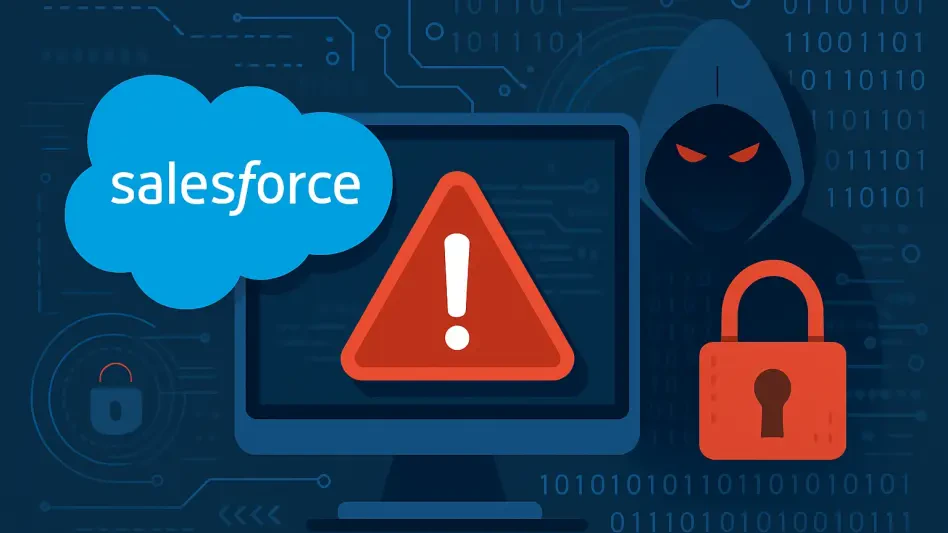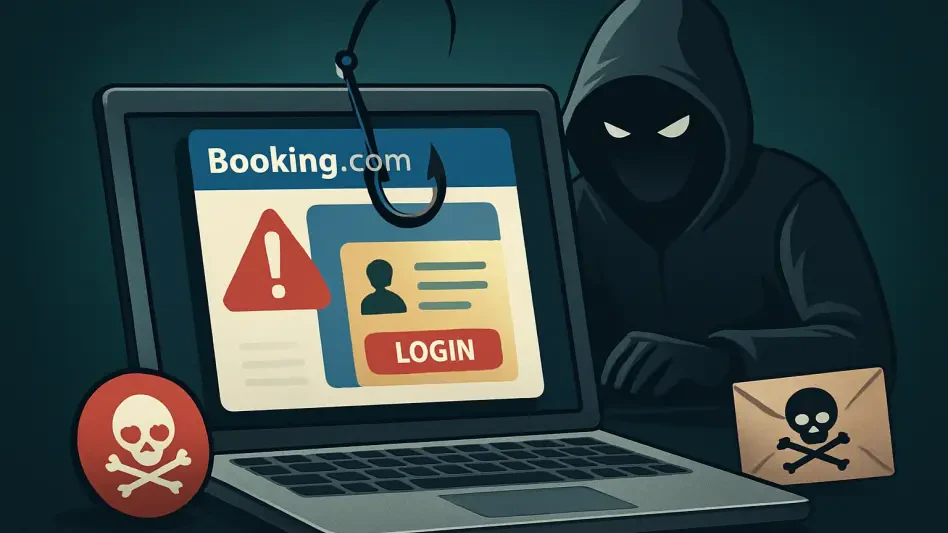In an era where digital infrastructure underpins nearly every facet of business operations, a chilling warning from the FBI has spotlighted a growing menace targeting one of the most widely used cloud platforms. Sophisticated cybercriminal groups are exploiting vulnerabilities in Salesforce through cunning social engineering tactics and technical loopholes, posing a severe risk to organizations worldwide. This alert underscores an urgent need for heightened vigilance as attackers employ voice phishing, or vishing, alongside OAuth token abuse to infiltrate high-value targets. With industries ranging from healthcare to finance relying on Salesforce for managing sensitive data, the implications of these breaches ripple far beyond individual companies, threatening entire ecosystems of interconnected services. As the FBI sheds light on the tactics of these threat actors, businesses are urged to reassess their security frameworks to counter an evolving landscape of cybercrime.
Emerging Threats in Cloud Environments
Tactics of Sophisticated Cyber Groups
The FBI has identified two formidable cybercriminal factions, known as UNC6040 and UNC6395, at the forefront of attacks targeting Salesforce environments. UNC6040, associated with the notorious ShinyHunters collective, has demonstrated a knack for supply-chain attacks by manipulating OAuth tokens tied to third-party applications. This approach allows persistent access to systems while evading immediate detection, often culminating in data exfiltration and extortion schemes. A notable incident earlier this year saw attackers use vishing to deceive employees into granting access, subsequently exploiting the breach for financial gain. The audacity of these operations highlights a critical vulnerability in trusted integrations, where attackers masquerade as legitimate entities to bypass conventional defenses, leaving organizations scrambling to respond to stealthy intrusions.
Meanwhile, UNC6395 focuses on exploiting compromised OAuth tokens linked specifically to applications like Salesloft Drift, embedding malicious elements within Salesforce ecosystems. Their strategy often involves stealing sensitive information, which is then either ransomed or sold on dark web marketplaces for profit. This dual focus on data theft and monetization amplifies the threat, as stolen data becomes a commodity in underground networks. The collaborative nature of these groups, evidenced by shared infrastructure and overlapping methodologies, suggests a coordinated effort that magnifies the scale of potential damage. Businesses must recognize that these actors operate within a sophisticated cybercrime ecosystem, making isolated defenses insufficient against such orchestrated campaigns.
Broader Implications for SaaS Ecosystems
The vulnerabilities exploited by these groups extend far beyond a single platform, casting a shadow over the broader Software as a Service (SaaS) landscape. The FBI and industry experts have pointed to the inherent risks in SaaS supply chains, where third-party applications integrated with platforms like Salesforce can serve as unwitting entry points for attackers. This interconnectedness means that a breach in one system can cascade through linked services, endangering entire cloud ecosystems. Sectors such as healthcare, which manage highly sensitive data like patient records, are particularly at risk, as any compromise could have devastating real-world consequences. The global reach of these threats demands a reevaluation of how organizations assess the security of their SaaS integrations.
Moreover, the evolving tactics of cybercriminals signal a troubling trend for future SaaS security. As attackers refine their methods, including the potential use of AI-driven tools to craft convincing vishing scripts, the sophistication of these threats is expected to escalate. This raises concerns about the adequacy of current security protocols in keeping pace with innovative attack vectors. Discussions among cybersecurity professionals emphasize the urgency of addressing these systemic weaknesses, as interconnected systems amplify the impact of each breach. Organizations must prioritize a holistic approach to security, recognizing that protecting one platform is no longer enough when threats can propagate through a web of digital dependencies.
Strategies to Counter Cyber Intrusions
Immediate Defensive Measures
In response to the alarming rise in attacks, the FBI has outlined actionable steps for organizations to fortify their defenses against these cyber threats. Regular audits of connected applications are critical to identifying and mitigating risks posed by third-party integrations, ensuring that potential vulnerabilities are addressed before exploitation. Enforcing multi-factor authentication (MFA) across all access points adds a vital layer of security, making it harder for attackers to gain entry even if credentials are compromised. Additionally, training employees to recognize vishing attempts is essential, as human error often serves as the weakest link in the security chain. These practical measures form the bedrock of a proactive defense strategy against persistent cyber adversaries.
Beyond these foundational steps, adopting a zero-trust architecture offers a robust framework to limit token-based access and prevent unauthorized lateral movement within systems. Proactive monitoring of OAuth flows can also help detect anomalies that may indicate malicious activity, allowing for swift intervention before significant damage occurs. The emphasis on layered defenses reflects a growing consensus among experts that single-point solutions are inadequate against multi-faceted threats. By integrating these strategies, organizations can build resilience against the deceptive tactics employed by groups like UNC6040 and UNC6395, reducing the likelihood of successful breaches in an increasingly hostile digital environment.
Long-Term Security Enhancements
Looking ahead, the cybersecurity community is advocating for systemic changes to address the root causes of these vulnerabilities. Implementing stricter standards for OAuth protocols could fundamentally alter how enterprises integrate cloud services, minimizing the risk of token abuse by enforcing tighter controls. Regulatory bodies are under increasing pressure to establish guidelines that hold SaaS providers accountable for securing their ecosystems, potentially reshaping industry practices over the coming years. Such measures aim to create a more secure digital landscape where trust in cloud services is underpinned by rigorous security benchmarks, rather than assumed reliability.
Additionally, leveraging advanced technologies like AI for threat detection presents a promising avenue for staying ahead of evolving attack methods. Cybersecurity analysts have noted the importance of studying patterns in attackers’ infrastructure, such as Tor-based networks, to anticipate and disrupt future campaigns. This forward-thinking approach underscores the need for continuous adaptation in security practices, as static defenses quickly become obsolete against innovative adversaries. As the threat landscape grows more complex, fostering collaboration between organizations, government agencies, and security experts will be key to developing comprehensive solutions that protect critical data from relentless cybercriminal pursuits.
Strengthening Defenses Against Evolving Risks
Reflecting on the concerted efforts to combat these cyber threats, it becomes evident that a multi-pronged approach is essential to safeguarding digital assets. The FBI’s urgent warnings about groups exploiting Salesforce platforms through vishing and OAuth abuse have prompted immediate action across industries, with many organizations reevaluating their security postures. By implementing rigorous audits, enforcing multi-factor authentication, and educating staff on social engineering tactics, businesses have taken crucial steps to mitigate risks in the face of sophisticated attacks. These efforts mark a pivotal shift toward proactive defense, acknowledging that reactive measures alone are insufficient against determined adversaries. Looking forward, the integration of zero-trust principles and the push for stricter regulatory standards offer a roadmap for sustained resilience. As the cyber landscape continues to evolve, ongoing collaboration and innovation in security practices remain imperative to protect against the next wave of digital threats, ensuring that data—the lifeblood of modern enterprises—remains secure.








